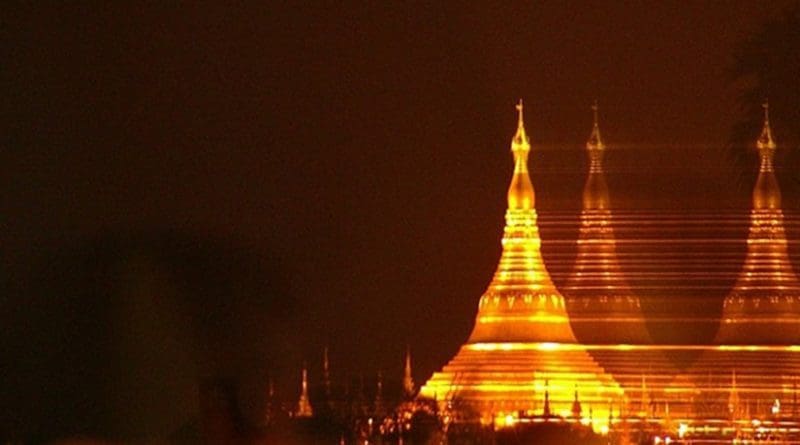Myanmar And Coronavirus: Yet To Feel The ‘Heat’ – OpEd
By SAAG
By Dr. S.Chandrasekharan
As of 19th April, there have been only 107 instances of coronavirus infections and five deaths in Myanmar. There have been five recoveries too. Of the five, four deaths occurred in Yangon Region.
Until last week the number of infections were only in double digits and those were spread out throughout the country. Yangon now has been hardest hit with 76 infections and therefore night curfew from 10:00 P.M. to 4:00 A.M. has been enforced in Yangon Region. All townships in the Yangon region have been placed under curfew as the sudden spurt in cases occurred in Yangon Region.
Despite having a 2220 KM long border with China, Myanmar has so far been spared of the intensity the other neighbouring countries have experienced in the region. There were many reasons. Firstly, Wuhan is too far away from Myanmar’s border. Secondly, Myanmar has no commercial connections with Wuhan and there are no direct flights either. So Myanmar was spared of the exodus of Wuhan residents during the New year (Year of Rat) to other places when many instances of Virus infections had already surfaced and the Chinese authorities did nothing to stop it.
Thirdly, Yunan the neighbouring Chinese Province of Myanmar had very few incidents of infections of the deadly virus. The first incident of virus infection occurred on 23rd of March.
With its limited medical infrastructure and minimal testing facilities, Myanmar authorities managed to keep the virus under control initially, with partial lock downs, social distancing, hygienic measures and some testing. But last week saw a spurt in the incidence of infections particularly in the Yangon Region. Over 50,000 workers had returned from Thailand during this period and though not all of them have been tested, the migrant workers fortunately have not brought the virus into the country.
What mattered this time was the alert civil authority and Suu Kyi made full use of the social media to connect with this people. Measures taken were transparent (Army had no role except to use the “stick” for strict implementation) and people by and large listened to the leader in following the instructions.
This is in contrast to the natural disaster “Nargis” that occurred in May 2008 when the country was under the Army. Over 140,000 were killed, 20,000 injured and 700,000 homes were destroyed affecting in all 11 million people. Yet the World did not know about it for long and the people suffered silently with the Army cutting off all communication channels.
This time Suu Kyi was in constant touch with the people and she repeatedly asked the people to participate in their fight against the Virus and she also emphasized that the virus should be combated with their traditional spiritual strength.
Two Committees were said to have been formed (Bertil Lintner) to manage the coronavirus. First was a 21-member Committee to oversee the management and generally take all measures to contain the Virus and treat those affected.
The second was a more insidious one – a eleven-member task force formed to trace the contacts of confirmed cases, take care of fake news and enforce the lock downs, curfew etc. The task force consists of First Vice President as the Chairman who is an Army man with the three Army Generals holding the important portfolios like Home, Border and Defence as well as the Joint Chief of Staff.
It is unfortunate that Suu Kyi chose to bring in the Army Generals leaving out important and relevant individuals concerned with the Virus Spread like the Health Minister.
The Army is said to be adopting a ‘Zero Tolerance Approach’, and all the efforts of the civilian Government led by Suu Kyi to have a benign approach with people’s cooperation were being nullified by the Army Generals who appear to have taken total charge in dealing with the coronavirus.
The Army has been particularly buoyed up by frustrating the efforts of the Suu Kyi and her colleagues in rejecting the Constitutional amendments brought in before the Parliament. After the proposals to dilute the role of the Army in governing the country, were voted out, the Army Chief is said to have remarked that the Army’s dominant role in the Constitution is a measure to ensure national stability.
It looks that to them, the elected members of the two Assemblies are more of a nuisance. But the Army is getting frustrated on another front in dealing with the Arakan Army in Rakhine State. The Arakan Army unlike other ethnic outfits is not holding on to any place as a base and are targeting the army posts selectively by surprise causing considerable casualties to the Army.
In the process of retaliation, the Army is venting out its frustration by attacking civilians. Villages are being subjected to aerial bombardment on a regular basis. The Army is using both helicopters and jets to bomb the suspected concentrations of the militants, but have only succeeded in causing immense death and destruction to the civilians. It is surprising that the Government led by Suu Kyi went along with the Army in declaring the Arakan Army as a “terrorist outfit,” which in fact is not the case.

